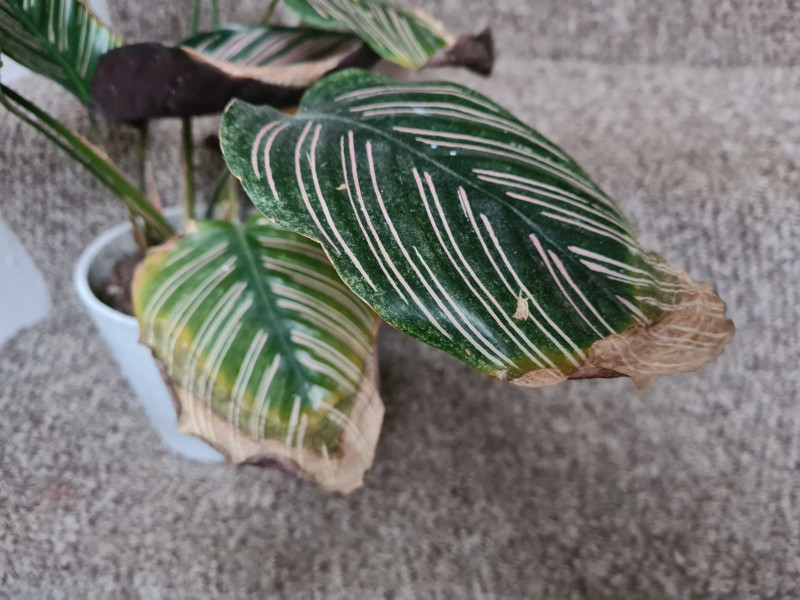
Disclosure: This post may include affiliate links meaning I receive a commission if you make a purchase through these links at no extra cost to yourself. This helps to keep OSERA ad free. Thank you for your support on this platform.
Calathea Crispy Edges
Calathea crispy edges is one of the biggest complaints we hear regarding Calathea plants. Calathea are notorious for being fussy and difficult to care for and one of the first signs they’ll show that they’re unhappy is crispy tips. Basically the edges of the leaves of the plant start to dry out, turn brown and then grow crispy. Sometimes this will just be limited to the edges of the leaves and otherwise the plant will be fine but in other instances the crisping will gradually move inwards until the whole leaf dies and then the same problem will start with another leaf.
So what are the causes or Calathea crispy edges, how can we prevent it and how can we help our plant once this has started? Let’s start by taking a look at some of the main reasons this happens.
Too Little Watering
One of the main causes of crisping edges in Calathea is from too little watering. Calathea plants need to be watered more regularly than other plants as they like a fairly moist environment. If you’re allowing your Calathea to dry out between watering the same way you would a succulent or a Peperomia then this is likely to cause crisping in your plant.
Not Enough Humidity
Dry air is one of the biggest causes of crispy edges on a Calathea plant. In their natural environments Calathea like quite high levels of humidity so if you live in a dry region your plant may suffer. You can counter this by using a humidifier or keeping your Calathea plants in the kitchen or bathroom. Misting also helps your plants but isn’t as effective as putting them in an environment with overall higher humidity. Keeping your Calathea next to a radiator or heating vent will cause the air to dry out around it and you may find the air in your home becomes drier in the winter months generally.
Too Much Sunlight
Calathea like bright indirect light. They do not do well in very low light conditions nor do they do well in direct sunlight. If you live in an area that receives lots of strong sunlight and you plant is in a south or west facing window then this could be the cause of your problem as the sun will burn the leaves causing them to dry out and giving them crispy tips. If you have this problem with your plant and it’s placed in a sunny spot then this could be the issue.
Unfiltered Water
Finally, Calathea crispy edges can be caused by unfiltered water. Yes, they really are this fussy. Now this isn’t applicable to everywhere as different countries and regions within countries have different water with differing levels of chlorine and minerals but if your plant is being watered sufficiently, your plant is surrounded by medium to high humidity and it’s not directly in front of a window then it’s very possible that your issue is coming from the type of water you use. Try using filtered water and see if this helps your problem, water filters are easy to come by and you can get them relatively cheaply like this one from amazon.
What To Do About Calathea Crispy Edges
If you’ve found the cause and solved the issue then you’ve probably worked out that although you can prevent further Calathea crispy edges, you can’t reverse the damage that’s already been done. There are a couple of things you can do about these dry browned leaves. Firstly if the damage isn’t too great and it doesn’t seem to be spreading across the leaf you can just leave it as it is. If the damage is superficial but you don’t like the way it looks you can simply cut away the brown crispy bits with a sharp pair of scissors. If the damage is quite extensive then it might be best cutting away the crisped because your plant can then focus on growing new healthy leaves.



Leave a Reply